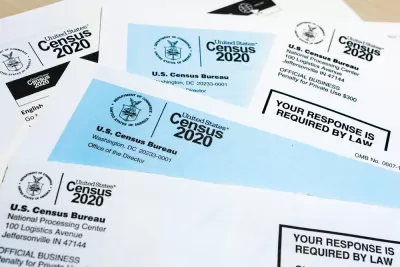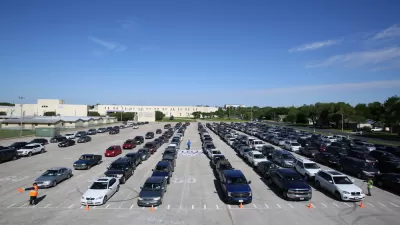The data release was delayed in part so that the agency could implement a new privacy policy aimed at protecting the identities of respondents.

Writing in Poynter, Mike Schneider cautions journalists not to forget about the 2020 Census, whose results continue to roll in, providing valuable insight into the nation’s changing demographics.
“Even though the census was conducted two years ago, the U.S. Census Bureau has yet to release its most detailed data about families, household relationships and comprehensive breakdowns of the U.S. population by age, race, ethnicity and tribal affiliation,” Schneider explains, noting that the first release of this data will come in the spring, with more releases throughout the year.
The delay comes in part due to a new privacy policy, which uses a tool known as ‘differential privacy’ that “injects random errors into the data so that information about households can’t be traced back to individuals.” For example, “Under the Census Bureau plan, sex and age breakdowns will be limited for detailed racial, ethnic and tribal groups based on the size of those groups in each state, county or place.”
Schneider outlines the tool’s use and its potential drawbacks. “Disagreements over whether differential privacy causes more harm than good have created a rift among some demographers, statisticians and researchers who use census data.” While critics argue that the tool will distort and limit data at the most local level, proponents say the Bureau is simply being more transparent about a practice that has always existed to protect the privacy of survey participants.
FULL STORY: The census may seem so 2020, but there’s still a lot for journalists to cover

Maui's Vacation Rental Debate Turns Ugly
Verbal attacks, misinformation campaigns and fistfights plague a high-stakes debate to convert thousands of vacation rentals into long-term housing.

Planetizen Federal Action Tracker
A weekly monitor of how Trump’s orders and actions are impacting planners and planning in America.

In Urban Planning, AI Prompting Could be the New Design Thinking
Creativity has long been key to great urban design. What if we see AI as our new creative partner?

Pedestrian Deaths Drop, Remain Twice as High as in 2009
Fatalities declined by 4 percent in 2024, but the U.S. is still nowhere close to ‘Vision Zero.’

King County Supportive Housing Program Offers Hope for Unhoused Residents
The county is taking a ‘Housing First’ approach that prioritizes getting people into housing, then offering wraparound supportive services.

Researchers Use AI to Get Clearer Picture of US Housing
Analysts are using artificial intelligence to supercharge their research by allowing them to comb through data faster. Though these AI tools can be error prone, they save time and housing researchers are optimistic about the future.
Urban Design for Planners 1: Software Tools
This six-course series explores essential urban design concepts using open source software and equips planners with the tools they need to participate fully in the urban design process.
Planning for Universal Design
Learn the tools for implementing Universal Design in planning regulations.
planning NEXT
Appalachian Highlands Housing Partners
Mpact (founded as Rail~Volution)
City of Camden Redevelopment Agency
City of Astoria
City of Portland
City of Laramie





























